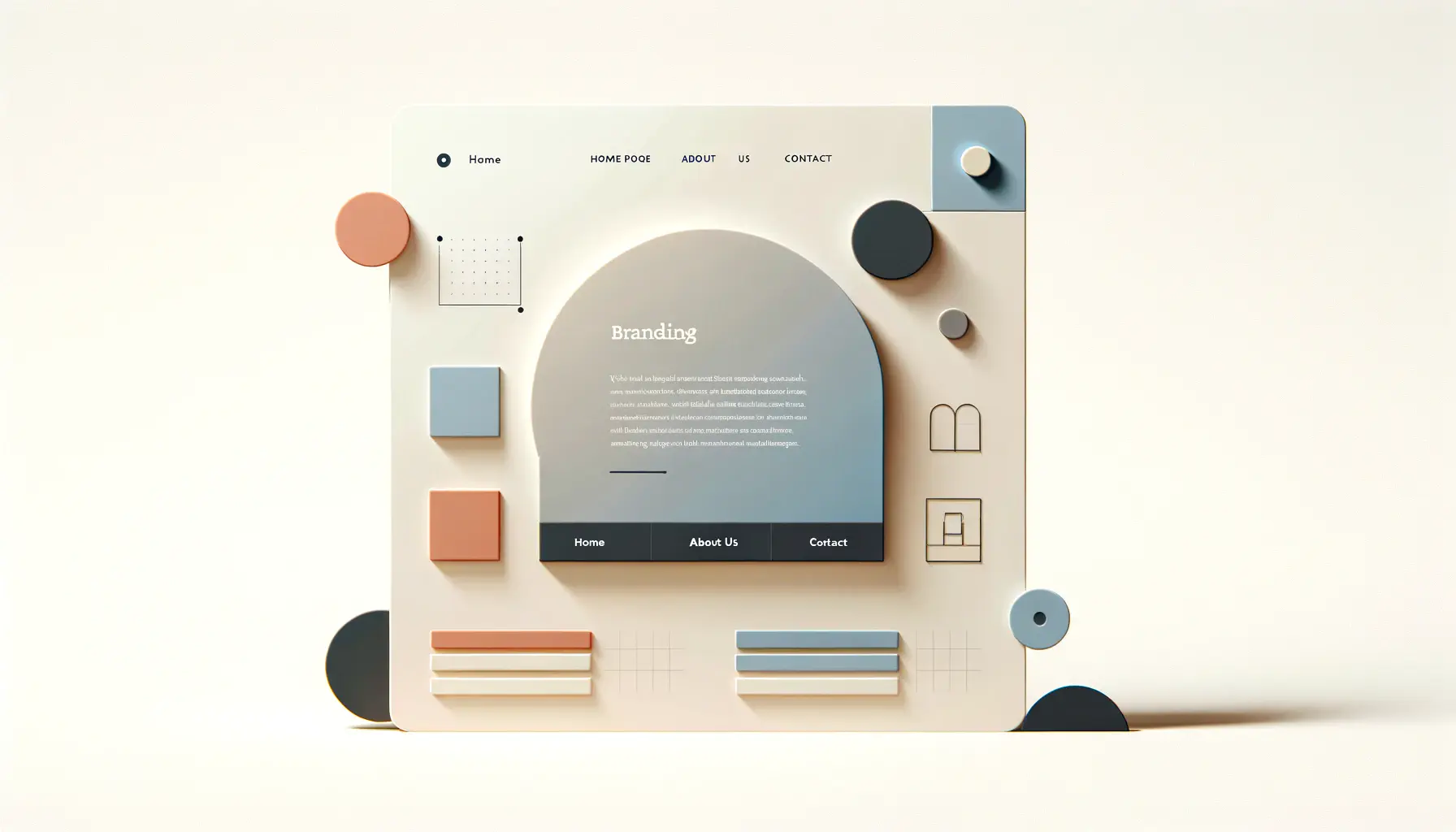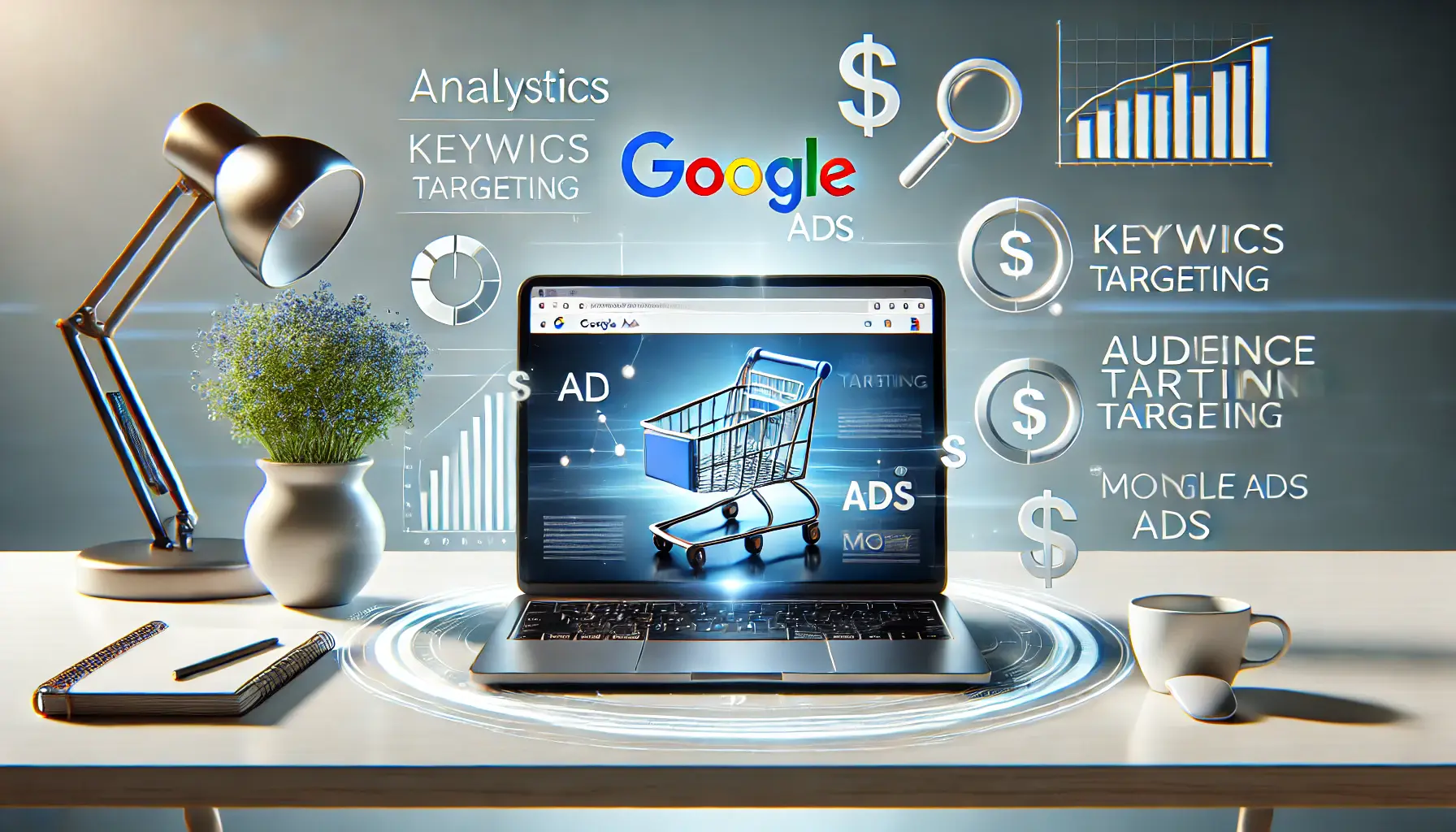Progressive enhancement in web design is a strategy that prioritizes content accessibility and user experience across all devices and browsers, regardless of their capabilities.
This approach is rooted in the principle of starting with a solid, functional base of content, then progressively adding more advanced layers of presentation and interaction that enhance the experience for users on more capable devices.
By focusing on the core content first, progressive enhancement ensures that every user, no matter their device or browser, can access the most critical information and functionality of a website.
In the realm of web development, where the landscape of devices and browsers is ever-evolving, the importance of adopting a progressive enhancement approach cannot be overstated.
It not only champions accessibility and inclusivity but also aligns with best practices for SEO, making it a comprehensive strategy for modern web design.
As we delve deeper into the advantages of progressive enhancement, it becomes clear why this methodology is not just a choice but a necessity for creating resilient, future-proof websites that serve all users equally.
- Ensuring Universal Accessibility
- Optimizing for Performance and Efficiency
- Enhancing SEO and Visibility
- Future-Proofing Your Website
- Cost-Effectiveness and ROI
- Enhancing Brand Perception and Trust
- Supporting Sustainability in Web Development
- Embracing Progressive Enhancement: A Path to Inclusive and Sustainable Web Design
- FAQs on Progressive Enhancement in Web Design
Ensuring Universal Accessibility
Foundation for All Users
At the heart of progressive enhancement lies its commitment to universal accessibility.
By structuring websites to function at their most basic level without JavaScript, CSS, or other advanced features, developers ensure that content is accessible to users on any device, including those with disabilities or older technologies.
This foundational accessibility is crucial in a digital age where inclusivity cannot be an afterthought.
Universal accessibility also extends to search engines, which are better able to index content that is readily available in the HTML.
This not only benefits users with accessibility needs but also improves a site’s visibility and ranking in search engine results pages (SERPs), demonstrating the dual advantage of adopting a progressive enhancement approach.
Enhanced User Experience on Capable Devices
While ensuring accessibility for all, progressive enhancement simultaneously allows for an enriched user experience on more capable devices.
By layering advanced styling and interactivity on top of the basic content, websites can offer a more engaging and dynamic experience for users with modern browsers and high-speed internet connections.
This approach ensures that enhancements add value without compromising the core functionality for users on less capable devices.
The strategy of starting with a basic, accessible version of the site and then adding enhancements ensures that the user experience is never degraded.
Instead, it is progressively enhanced, living up to the methodology’s name.
This ensures that all users, regardless of their device’s capabilities, have a positive and inclusive experience when accessing web content.
The cornerstone of progressive enhancement is its focus on universal accessibility, ensuring that every user has access to the core content and functionality of a website, while also providing an enhanced experience for those on more capable devices.
Optimizing for Performance and Efficiency
One of the significant advantages of progressive enhancement is its impact on website performance and efficiency.
By prioritizing content and basic functionality first, websites can load faster for all users, which is especially beneficial for those with slower internet connections or less powerful devices.
This section explores how progressive enhancement contributes to optimized performance and efficiency, making websites more accessible and user-friendly.
Performance optimization is a critical aspect of web design that directly affects user experience and satisfaction.
Progressive enhancement plays a pivotal role in achieving high performance by ensuring that websites remain lightweight and fast-loading at their core.
Here’s how:
- Reduced Load Times: Starting with a basic version of the website that includes essential HTML content ensures that all users can quickly access the most important information without waiting for heavy scripts or stylesheets to load.
- Efficient Resource Utilization: By adding advanced features as optional enhancements, resources are used more efficiently, loading only what is necessary for each user’s experience. This approach prevents the wasteful loading of unused features, contributing to faster overall performance.
- Improved Mobile Experience: With mobile users often on slower networks, the lightweight initial load of progressively enhanced websites significantly improves accessibility and usability on mobile devices.
Strategies for Performance Optimization
Incorporating progressive enhancement into web design involves specific strategies aimed at optimizing performance.
These strategies ensure that the website remains responsive and efficient, regardless of the user’s device or connection speed:
- Mobile-First Design: Adopting a mobile-first approach ensures that the website is optimized for mobile devices from the outset, which naturally aligns with the principles of progressive enhancement by focusing on core content and functionality first.
- Lazy Loading of Resources: Implementing lazy loading techniques for images, scripts, and stylesheets ensures that these resources are only loaded when needed, further improving page load times and reducing bandwidth usage.
- Conditional Loading: Using feature detection to conditionally load enhancements allows the website to tailor the experience to the user’s device capabilities, loading advanced features only when supported by the browser.
Optimizing for performance and efficiency through progressive enhancement not only improves the user experience but also contributes to lower server loads and bandwidth usage, making it a sustainable approach for web development.
Enhancing SEO and Visibility
Progressive enhancement significantly impacts a website’s search engine optimization (SEO) and online visibility.
By ensuring that the core content is accessible and semantically structured, websites can achieve better indexing by search engines.
This part delves into how progressive enhancement aligns with SEO best practices and enhances a site’s visibility in search engine results.
The relationship between progressive enhancement and SEO is grounded in the methodology’s emphasis on content accessibility and semantic HTML.
Here’s how these aspects contribute to improved SEO:
- Improved Crawling and Indexing: Search engines prioritize content that is easily accessible and semantically marked up. Progressive enhancement ensures that the core content is available without the need for JavaScript or CSS, making it easier for search engine bots to crawl and index the site.
- Enhanced User Experience: Search engines, particularly Google, place a high value on user experience as a ranking factor. Websites that load quickly and are accessible across all devices tend to rank higher in search results.
- Mobile Optimization: With the increasing importance of mobile-first indexing, progressive enhancement’s mobile-friendly approach aligns perfectly with search engines’ preference for mobile-optimized sites.
SEO Best Practices with Progressive Enhancement
To maximize the SEO benefits of progressive enhancement, web developers and designers should adhere to several best practices:
- Use Semantic HTML: Employing semantic HTML tags (e.g.,
<article>,<nav>,<header>) helps search engines understand the structure and content of your website, improving content relevancy and search rankings. - Ensure Accessibility: Making your website accessible to all users, including those with disabilities, can positively impact your SEO. Use ARIA roles and attributes to enhance accessibility where necessary.
- Optimize Content for Keywords: While ensuring your content is accessible, also optimize it for relevant keywords. However, maintain a natural and user-friendly approach to avoid keyword stuffing.
Integrating progressive enhancement into your web development process not only caters to the immediate needs of all users but also strategically positions your website for better search engine rankings and visibility. This dual benefit underscores the importance of adopting progressive enhancement as a core component of your SEO strategy.
Future-Proofing Your Website
The rapid evolution of web technologies poses a challenge for maintaining the relevance and functionality of websites over time.
Progressive enhancement offers a solution by future-proofing websites, ensuring they remain functional and relevant as new technologies emerge.
This approach allows for the seamless integration of new features and technologies, without necessitating a complete overhaul of the existing site structure.
Future-proofing through progressive enhancement involves building a solid foundation that can adapt to technological advancements.
This ensures that a website remains accessible and functional, regardless of the devices and browsers that may become available in the future.
Here’s how progressive enhancement contributes to a website’s longevity:
- Scalability: Websites designed with progressive enhancement are inherently scalable. They can easily accommodate additional layers of functionality and design as needed, without disrupting the core user experience.
- Adaptability: By focusing on content-first and enhancing functionality based on device capabilities, websites can adapt to new technologies and user behaviors without requiring significant changes to the underlying structure.
- Maintenance: Progressive enhancement simplifies maintenance by decoupling the presentation and functionality from the content. This separation makes it easier to update or add features without affecting the website’s core functionality.
Implementing Future-Proof Strategies
To ensure your website benefits from the future-proofing advantages of progressive enhancement, consider the following strategies:
- Embrace Web Standards: Adhering to current web standards ensures that your website is built on a universally recognized foundation, making it more likely to remain compatible with future technologies.
- Focus on Content Accessibility: Ensuring that your core content is always accessible, regardless of technological advancements, guarantees that your website remains valuable and usable for all users.
- Modular Design and Development: Adopting a modular approach to design and development allows for easier updates and integration of new technologies, as each component can be updated independently without affecting the whole.
By prioritizing progressive enhancement in your web development process, you not only enhance the current user experience but also safeguard your website against the obsolescence often brought about by the fast-paced evolution of web technologies.
Cost-Effectiveness and ROI
Investing in progressive enhancement is not just about adhering to best practices in web development; it’s also a strategic financial decision.
By focusing on a content-first approach that ensures accessibility for all users, businesses can significantly reduce development and maintenance costs over time.
Moreover, the inclusive nature of progressive enhancement can lead to a broader audience reach, potentially increasing return on investment (ROI) for website projects.
The cost-effectiveness of progressive enhancement stems from its forward-thinking approach to web design and development.
Here’s a closer look at how this methodology can lead to financial savings and enhanced ROI:
- Reduced Development Costs: Building a website with a solid foundation that works across all devices and browsers from the outset can decrease the need for costly retrofits and redesigns as new technologies emerge.
- Lower Maintenance Costs: Websites built using progressive enhancement are easier to maintain and update, as enhancements can be added incrementally without overhauling the entire site.
- Increased Audience Reach: By ensuring that your website is accessible to everyone, regardless of their device or browser, you can reach a wider audience, including those who rely on assistive technologies, thereby potentially increasing your customer base.
Maximizing ROI with Progressive Enhancement
To maximize the ROI of your web development efforts through progressive enhancement, consider the following strategies:
- Focus on User Experience: A positive user experience can lead to higher engagement rates, increased conversions, and customer loyalty. Progressive enhancement ensures that all users have access to a functional and engaging website, regardless of their technology.
- Analyze User Data: Use analytics to understand how your audience interacts with your website. This data can inform future enhancements that are most likely to improve user satisfaction and conversion rates.
- Iterative Improvements: Adopt an iterative approach to website development, making small, incremental improvements based on user feedback and emerging technologies. This approach allows for continuous optimization of the user experience and can lead to sustained growth in ROI.
Embracing progressive enhancement as a core principle of web development not only ensures that your website is accessible and future-proof but also positions your business to capitalize on a broader market reach and achieve a higher return on investment.
Enhancing Brand Perception and Trust
In today’s digital landscape, a website often serves as the first point of interaction between a brand and its potential customers.
The experience users have on this digital platform can significantly influence their perception of the brand.
Progressive enhancement plays a crucial role in shaping these perceptions by ensuring that every user, regardless of their device or browser capabilities, is met with a functional and accessible website.
This inclusive approach not only enhances brand perception but also fosters trust among users.
By prioritizing accessibility and user experience through progressive enhancement, brands can demonstrate their commitment to inclusivity and customer satisfaction.
This commitment is reflected in several key areas:
- Universal Accessibility: A website that is accessible to all users, including those with disabilities, sends a powerful message about a brand’s values and its dedication to inclusivity.
- Consistent User Experience: Ensuring a consistent and positive user experience across all devices and browsers helps build trust and loyalty among users, as they can reliably access the website’s content and services.
- Positive Brand Image: A website that loads quickly, is easy to navigate, and is free from technical issues enhances the brand’s image, portraying it as professional, reliable, and customer-centric.
Strategies for Building Trust through Progressive Enhancement
To leverage progressive enhancement in building brand perception and trust, consider implementing the following strategies:
- Accessibility First: Design and develop your website with accessibility in mind from the start. Use semantic HTML, ARIA roles, and ensure that all content is accessible without reliance on JavaScript or CSS.
- User-Centric Design: Focus on the needs and preferences of your users. Conduct user testing across a variety of devices and browsers to identify and address potential usability issues.
- Transparent Communication: Use your website to communicate your brand’s commitment to accessibility and inclusivity. Include an accessibility statement and provide contact information for users to report issues or provide feedback.
Adopting a progressive enhancement approach to web development not only ensures technical compliance with web standards but also aligns with ethical business practices that prioritize user needs and inclusivity. This alignment between technology and values can significantly enhance brand perception and foster a deeper sense of trust among users.
Supporting Sustainability in Web Development
The concept of sustainability in web development encompasses more than just environmental considerations; it also involves creating websites that are enduring, efficient, and adaptable to future needs without requiring constant overhauls or excessive resource consumption.
Progressive enhancement is inherently aligned with these principles, offering a methodology that supports the long-term sustainability of web projects.
By building websites that are accessible, performant, and adaptable from the outset, progressive enhancement contributes to a more sustainable web ecosystem.
Here’s how:
- Reduced Resource Consumption: Websites built with progressive enhancement tend to be lighter and faster, consuming less bandwidth and server resources. This efficiency not only improves user experience but also reduces the environmental impact associated with data transmission and server load.
- Longevity and Adaptability: The layered approach of progressive enhancement ensures that websites can evolve over time with minimal waste. By allowing for incremental updates and enhancements, this methodology extends the lifespan of web projects, reducing the need for complete rebuilds.
- Enhanced Accessibility: By ensuring that websites are accessible to all users, including those with disabilities and those using older or less capable devices, progressive enhancement promotes a more inclusive and equitable web. This inclusivity supports the broader goal of sustainability by ensuring that digital resources are available to the widest possible audience.
Implementing Sustainable Practices
To further support sustainability through progressive enhancement, web developers and designers can adopt the following practices:
- Optimize Assets: Compress images, minify CSS and JavaScript, and use modern formats to reduce file sizes without compromising quality. This practice not only speeds up load times but also decreases energy consumption associated with data transfer.
- Use Green Hosting: Consider hosting your website on servers powered by renewable energy. Green hosting providers offer an environmentally friendly alternative to traditional hosting, further reducing the carbon footprint of your web project.
- Design for Efficiency: Adopt a minimalist design philosophy that focuses on essential content and functionality. This approach not only aligns with the principles of progressive enhancement but also minimizes the environmental impact of your website by reducing the need for complex, resource-intensive features.
Ignoring the principles of progressive enhancement and sustainability in web development can lead to inefficient, inaccessible, and short-lived web projects that contribute to digital waste and exclusion.
Embracing Progressive Enhancement: A Path to Inclusive and Sustainable Web Design
The journey through the principles and advantages of progressive enhancement in web design reveals a compelling narrative: a methodology that not only prioritizes the user experience across a spectrum of devices and browsers but also aligns with broader goals of accessibility, sustainability, and efficiency.
Progressive enhancement is not merely a technical strategy; it is a philosophical approach to web development that respects the diversity of the web’s users and anticipates the future of web technology.
The Pillars of Progressive Enhancement
At its core, progressive enhancement is built on the pillars of universal accessibility, optimized performance, and future-proofing.
These foundational elements ensure that websites are accessible to all users, load efficiently, and remain relevant and functional as technology evolves.
By adhering to these principles, web developers and designers can create digital experiences that are not only inclusive but also resilient in the face of rapid technological change.
Strategic Benefits for Businesses and Brands
The adoption of progressive enhancement offers strategic benefits for businesses and brands.
By ensuring that websites are accessible and performant, businesses can reach a wider audience, improve their search engine rankings, and enhance their brand perception.
The focus on sustainability and efficiency can also lead to cost savings over time, as websites require fewer overhauls and consume fewer resources.
Ultimately, progressive enhancement is a sound investment in a brand’s digital presence, offering returns in the form of increased visibility, customer satisfaction, and loyalty.
Conclusion: A Commitment to the Future of the Web
Embracing progressive enhancement is a commitment to the future of the web—a future that is inclusive, efficient, and sustainable.
As we look ahead, the principles of progressive enhancement will continue to guide the development of web projects that serve the needs of all users, regardless of their device, browser, or abilities.
By prioritizing content accessibility, optimizing for performance, and designing for longevity, we can ensure that the web remains a vibrant, accessible, and valuable resource for everyone.
Progressive enhancement is more than a methodology; it is a vision for a web that is truly universal.
Quality web design is key for a great website! Check out our service page to partner with an expert web design agency.
FAQs on Progressive Enhancement in Web Design
Explore common questions about progressive enhancement, a strategy ensuring web accessibility and optimal user experience across all devices and browsers.
Progressive enhancement is a web design strategy that starts with a basic, accessible version of content, then adds more advanced functionalities for capable devices.
It ensures all users access core content and functionality, regardless of device or browser capabilities, enhancing accessibility and user experience.
It begins with semantic HTML for content, adds CSS for styling, and then layers JavaScript for interactivity, based on the user’s browser capabilities.
Progressive enhancement focuses on content-first, while graceful degradation starts with full functionality, then scales back for less capable browsers.
Yes, it improves SEO by making content accessible and crawlable by search engines, leading to better indexing and higher search rankings.
Yes, by focusing on essential content and functionality first, it reduces load times and improves performance across all devices.
It ensures mobile users access core website features quickly and efficiently, even on slower connections or less advanced devices.
Yes, it reduces the need for separate versions of a site, lowers maintenance costs, and extends the site’s lifespan, making it a cost-effective strategy.











